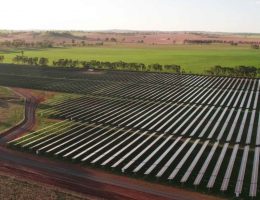Angus Taylor’s trouble with numbers is well known. His problems with the City of Sydney and their supposed travel budget has been well documented, and now his problems have surfaced again in the federal government’s new transport policy, the so-called Future Fuels Strategy.
Taylor on Friday used the Future Fuels discussion paper to justify his government’s decision not to provide any subsidies or incentives for electric vehicles, citing claimed emissions reduction costs of $747 a tonne.
“(Subsidising) a typical electric vehicle for a consumer wouldn’t be value for money for taxpayers, it’d be almost $750 per tonne of carbon that we abate,” Taylor told ABC’s Radio National Breakfast program. “And in fact, we can abate, now, at around $16 from the Emissions Reduction Fund, so it’s just not value for money.”
Taylor’s claim of a $750 a tonne abatement costs for a “typical EV” is a preposterous number that raises immediate alarm bells, mainly because it takes no account of the ability to charge using renewables directly, or the assumed reduction in emissions from the grid.
It is also patently wrong on another key metric, Taylor’s team is comparing apples with oranges.
It took us just a few moments to discover the source of the $750 a tonne abatement number in Appendix A of the Future Fuels strategy document. It is claimed to be based on the assumed costs of an electric Renault Kangoo van, compared with its fossil fuel equivalent.

Further into the document, it shows that Taylor’s team has chosen to compare the Renault electric, which comes only as a maxi version and has an extended freight length of 1.86m, with the petrol compact version, which has a freight length of just 1.5m.
The Renault Kangoo diesel maxi version, the same size as the electric equivalent, is nearly one third more expensive ($32,990 vs $25,990) than the compact version chosen by Taylor’s team. The effect of this false comparison is to vastly inflate the claimed abatement costs.
“You should not be comparing the Kangoo maxi with the compact version, because the maxi is much bigger than the compact,” a Renault spokesperson told RenewEconomy.
It’s doubly ironic, because Renault’s Zoe electric car is the most popular electric vehicle in many European countries, including Franc, easily outselling Tesla’s Model 3 and the Nissan Leaf. But is has been withdrawn from Australia, partly because of the lack of government support and infrastructure, the same reason that other popular EV models in Europe, such as the Kia Nio and the VW ID.3, are not available in Australia.
The problem with such obvious errors is that it raises questions about the rest of the analysis.
Ketan Joshi goes into further details over at Renewconomy about why the numbers are wrong, noting it’s nearly a repeat of its fight against wind and solar incentives, which were also led by Taylor, both before entered parliament and since.
To read the full version of this story, please go to our EV-focussed sister site, The Driven and click here…











